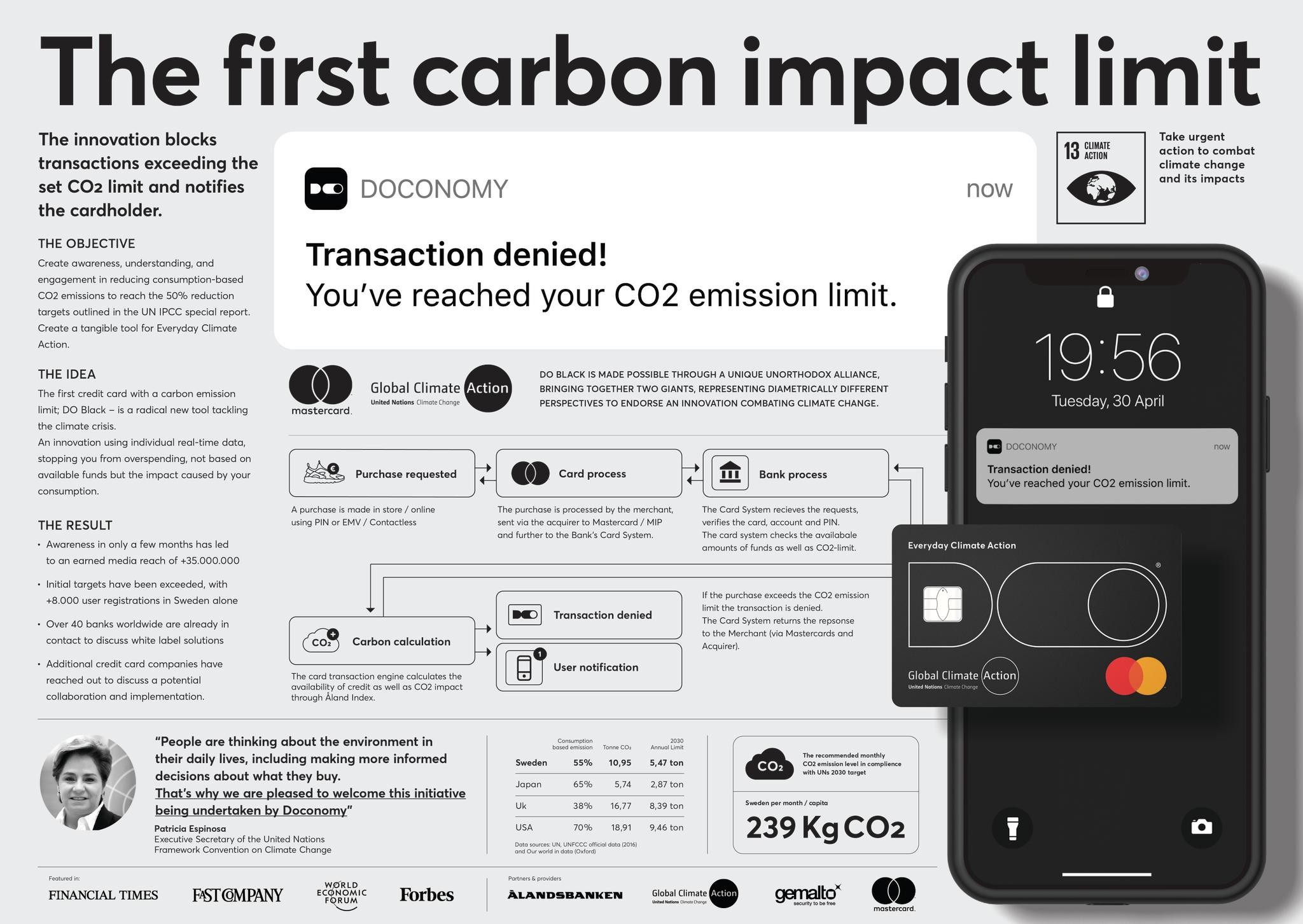Eurobest
The 2030 Calculator
FARM, Stockholm / DOCONOMY / 2020
Overview
Entries
Credits
Overview
Background
Consumers are looking for increased transparency and brands are looking to provide information enabling conscious consumption.
Calculations made by using The 2030 carbon footprint for products (CFP) calculator are calculated on average emissions factors for materials, energy consumption, and transportation based on product category, the total weight of the product, the weight of unique materials used in each product (or packaging) part, location and distances between supplier, manufacturing facility and distribution center and modes of transport between each as well as the source of energy used in production.
Carbon Footprint calculations made by The 2030 Calculator cover the cradle-to-gate phases of a typical product life-cycle assessment which are under the operational control of the product manufacturer. These calculations are not intended to provide an exhaustive assessment of a product’s GHG footprint as would be the purpose of a full product life-cycle assessment.
Budget: 75 000 €
Idea
Calculating the carbon footprint of products has long been difficult and costly, with regular LCA (Life Cycle Assessment) calculations taking weeks to complete per product. This creates a significant hurdle for brands that aspire to become more transparent. The challenge of calculating the carbon footprint of products is especially difficult for small- and medium-size brands, which is a problem since many are willing to use carbon labeling as a competitive edge.
The 2030 Calculator is an innovation injecting responsibility at core in creative e-commerce unlocking brand impact transparency by increasing accessibility, reducing cost and time and enable impact data comparability. As a result, creating a competitive edge for lower impact products and sustainable production.
The 2030 Calculator is the first of its kind, an open platform allowing any brand to become impact transparent in a matter of minutes.
Strategy
We developed a database of CO2e emissions data for the cradle-to-gate emissions generated by materials used in all parts and packaging of products (by total weight of each finished part/material), average energy use for product assembly (by product category, country location, and type of energy used in assembly) and transportation (by total product weight, distance traveled and mode of transport between supplier, manufacturing facility and distribution center).
To complete a product carbon footprint calculation, the user has to have production data available including the total weight of the product as well as the weight and material of each product part (or piece of packaging material), the location of each material supplier, the location of the manufacturing facility (and type of energy used) and the location of the final distribution center, including the modes of transport between them. With those data points, calculations can be made in minutes.
Execution
By using and refining existing ISO standards and ways of calculating impact we created a data journey that moves from raw material emissions data to impact insights and tangible results enabling product carbon labeling by any brand.
The 2030 Calculator model ensures exponential growth is based on additional emission data provided by brands each time they perform a calculation, creating a growth platform for shared impact data calculations and comparable results.
2030calculator.com is available to all brands implemented as a free to use collaborative platform expanding with every material data added and calculation made.
The desired future state is price tags, presenting not only the financial cost of the product but also the cost for the impact on the planet
Outcome
The educated consumer experience is at core, the 2030 Calculator is accelerating the ability for brands to carbon label their products, a key component in conscious consumption.
Over 3 000 product calculations has already been made on the platform and world leading brands are using the calculator pre- or post-production. Categories has already expanded with brands funding and/or contributing with data. Please see Emeco (Navy Chair) launch at Climate Week using the 2030 Calculator for example.
The desired future state is price tags, presenting not only the financial cost of the product but also the cost for the impact on the planet.
“You can't reduce what you don't measure. In order for us to tread lighter on the planet, we must first establish a universal metric of impact: Carbon. Doconomy's 2030 Calculator is exactly the type of transparency that businesses need to communicate their products' impact." Tim Brown, Allbirds co-CEO
Similar Campaigns
4 items


